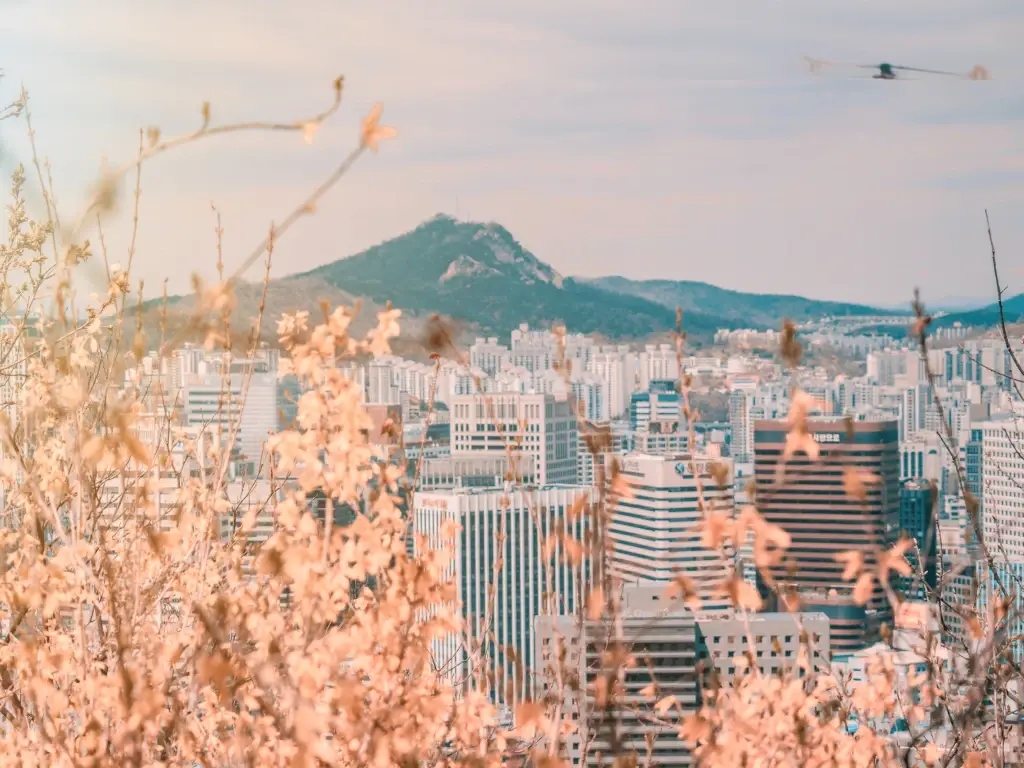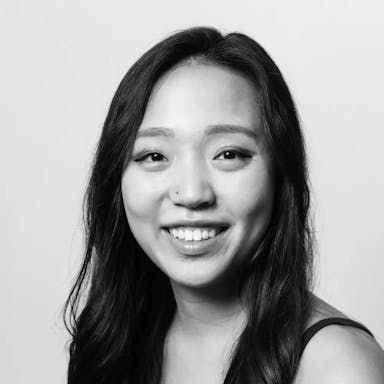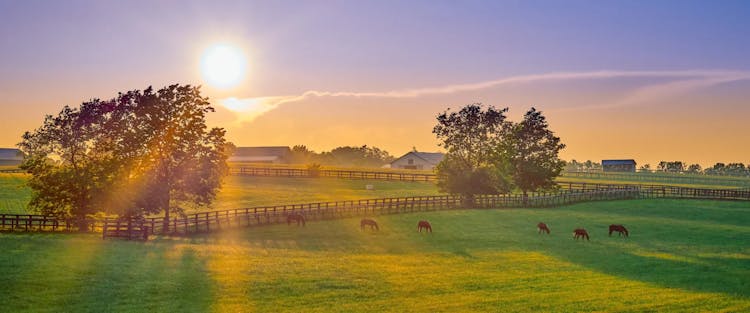
Seoul: The Asian Capital Where K-Pop and Confucianism Mingle
You might know South Korea as the birthplace of recent pop culture phenomena such as Squid Game, Oscar-winning film Parasite, and K-pop group BTS. Seoul, its largest metropolis, has long served as Korea’s capital from 1394 until the country’s division in 1948. It’s now the capital of South Korea and, when you include the surrounding metro area, houses about 50% of South Korea’s population—almost 25 million people.
Seoul’s modern history has been shaped by Japanese colonization in the early 1900s, US military intervention during the Korean War in the 1950s, and the rapid industrialization of the last 70 years. It is hyper modern but extremely traditional at the same time, creating a seemingly contradictory architecture and cityscape—futuristic industrial design juxtaposed with beautifully preserved hanoks (traditional Korean houses).
Yes, it has the K-pop and pop culture you know, but also, so much more.
Korean Confucianism in practice
Confucianism was introduced to Korea in the late 1300s, and a strict social hierarchy enforced by its principles is still very much alive in Seoul and throughout South Korea today; age, societal position, and ranking all dictate how one should behave. This affects norms from drinking to dining to body language (slightly bowing) when meeting others. For example, make sure not to lift your spoon until the eldest at the table has touched theirs and taken a bite.
Noonchi, a term described as tactfulness, is the expectation that you should pay attention to the emotional states of those around you. Travelers should expect to speak in low tones in public places out of respect for locals.
The Korean language contains honorifics intended for anyone older or in a position of authority. For example, a greeting to a friend or peer is a simple “an-nyung,” but that same greeting adds honorifics to become “an-nyeong-ha-se-yo” for elders.
Exploring outdoor markets

Outdoor markets offer a chance to sample high-quality Korean street food where locals often shop for their produce every day. Si-jangs, or open markets, serve everything from spicy chicken feet to purple blood sausage to the fan-favorite tteokbokki, chewy rice cakes cooked in a spicy sauce.
For deep-fried mung bean pancakes to dip into soy sauce or the famous knife-cut noodles featured in the Korea episode of Netflix’s Street Food: Asia, visit Gwangjang Si-jang during daytime hours. Dongdaemun night market offers both clothes shopping and street vendors during its late hours. And for fresh live octopus or flounder that you pick out yourself to be prepared on the spot, visit Noryangjin fish market.
Pockets of traditional Seoul

Hanok is the term for a traditional one-story Korean house made with timber, stone, and rocks, first designed in the 14th century. Its tiled roof, open courtyard, and wooden floors retain heat during the winter and cool the structure down in the summer.
Though many hanoks in Seoul were demolished by the Japanese during the colonial era, Korean philanthropists and independence fighters managed to save pockets of traditional houses that Koreans still live in today.
Bukchon Hanok Village in the north of Seoul is a 600-year-old preserved hanok area where tourists can take a self-guided audio tour offered by the city. Ikseon-dong Hanok Village, just south of Bukchon, was built in the 1920s to establish hanoks amidst expanding Japanese presence. It is a bustling tourist attraction perfect for traditional gifts like customized Korean name stamps and popular hanok dessert cafes like Cheongsudang.
Magical urban forests

Visitors are often surprised by how green Seoul is; 28% of the city is parks and green spaces. Though preserving green spaces presents a continuous struggle during rapid industrialization, there are still many nature options, even within the metropolitan city area.
The 270-acre Namsan Park is at the heart of the city, north of the Han River, boasting a 774-foot high tower accessible by footpath or gondola. At 2,744 feet, Bukhansan is a mountain that sits in the north of the city, and climbing its peak, while strenuous, is a perfect day trip for avid hikers.
For more relaxing recreation, check out one of the parks that stretch along the Han River with popular biking and walking routes. Pack a picnic blanket and order fried chicken on the Baemin app to Yeouido Hangang Park and watch the sun as it sets over the city. Or, for an alternative sunset viewpoint, head to Baekbeom Plaza and stroll along the old Fortress Wall of Seoul to see it light up at night.
Coffee and pastry central

Seoul ranks among the cities with the most coffee shops per capita. Formerly known as dabangs, coffee shops used to be some of the only publicly available gathering places for artists, students, and intellectuals to express their political opinions and go on dates, regardless of class status.
Today, dabangs have been replaced with domestic and foreign coffee chains and independent cafes. You can find unique Instagrammable cafes in every corner of Seoul, from waterfall cafes to letter-writing cafes.
Seoul’s pastries are unforgettable—many Korean chefs train in Paris and return to Korea, combining Korean flavors with French pastry-making techniques. For the buzziest cafes like Cafe Onion and Nudake, check out Seongsu dong, which used to be a shoe and leather-making neighborhood. Its cafe interiors have repurposed factory warehouses with a Korean design aesthetic, making for a unique mix of old and new.
Try the soju, but don’t skip makgeolli
Though soju is the most commonly known Korean alcohol, makgeolli has made a cultural resurgence in recent years. Makgeolli is a sweet milky rice wine that has been consumed by farmers and laborers throughout Korean history. Its production was banned under Japanese rule and then again by the government post-Korean War because of widespread grain shortages.
In recent decades, as makgeolli varieties have exploded to include flavors such as cream cheese and chestnut, it’s become the drink of choice for South Koreans. Artisanal, home-brewed makgeolli has also become extremely popular.
Particularly loved by the elderly, it’s common to see a group of hikers in mountain gear gulping down rice wine at the base of Seoul mountains. On rainy days, Koreans frequent jeon-jips, or pancake restaurants, because the sound of rain reminds them of the sound of oil frying the jeons. Of course, they always pair their food with makgeolli.
Spend the day at a jjimjilbang
Jjimjilbangs are saunas that date back to the 15th century, when they were used for medicinal purposes. Koreans frequent them for a good soak, scrub, and socialization. There is one caveat: You have to get completely naked with strangers. Once you rinse off and soak in the heated tubs, change into the rented jimjilbang uniform and head to the dry saunas. These are hot stone rooms that range from 104 to 212 degrees Fahrenheit.
After sweating out all your toxins, head to the cool common area to crack open some long-cooked hard-boiled eggs and drink shikhae, a refreshing Korean rice dessert drink. You’ll see Koreans of all ages gossiping, watching K-dramas, or napping on the floor. Most jjimjilbangs are open 24 hours, so it’s not uncommon for travelers to stay overnight.
Good to Know
Is Seoul expensive?
Seoul can range in its prices. A three-star hotel will cost you about $150-200 a night, but a highly rated hostel will only run $15-30. For a sit-down dinner at a mid-range restaurant, an entree might be $15. For cheaper meals like street food, you can fill up for under $6 per entree.
You can keep expenses to about $50 a day.
Best time to visit Seoul
Fall and spring have the best weather (mild and temperate) and the fewest tourists. In the fall, a palette of autumn leaves colors the city, and the spring bathes Seoul in cherry blossoms.
Seoul gets crowded in the summer with visitors and students on break. These are also the hottest temperatures and wettest monsoon months. December through February can be extremely chilly and see lots of snowfall.
What languages are spoken in Seoul?
The official language of South Korean is Korean. Koreans have limited English proficiency. Basic communication will be understood, but anything beyond that will be difficult. Download the Google Translate app before you go for emergencies.
Seoul with kids
Seoul has a lot of offerings for children. Families can visit Seoul’s version of Disneyland, Lotte World Adventure, for $80 a person. Most museums charge discounted rates for children. Seoul also has government-funded programming for children and families throughout the year, from outdoor concerts to plays.
Seoul public transportation
Seoul has a wide-reaching public transit system that is easily navigable for foreigners. Its buses and metro are clean, modern, and timely. If you want to venture outside Seoul, Korea’s KTX high-speed trains can get you anywhere in the country.
Is Seoul safe?
South Korea ranks #43 in the Global Peace Index. Seoul is extremely safe and has low levels of violent crime. South Korea ranks #95 in the world, with a score of 42/100 for LGBTQ+ equality. Seoul, despite its modernity, is still struggling when it comes to LGBTQ+ recognition and rights. There is a possibility of discrimination and hostility, especially from older generations.
Getting to Seoul
- Main airport: ICN
- Average Going deal price on flights to Seoul: $661 roundtrip
More Asia destinations:
Published October 26, 2023
Last updated December 19, 2023
Articles you might like
View AllTreat your travel to cheap flights
Most deals are 40-90% off normal prices with great itineraries from the best airlines. If it's not an amazing deal, we won't send it. Sign up for free to start getting flight alerts.




